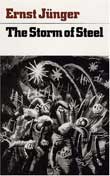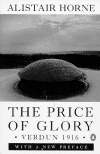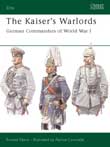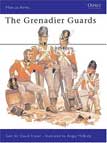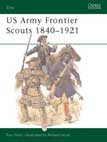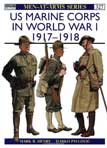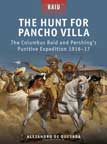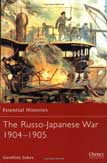

A memoir of astonishing power, savagery, and ashen lyricism, Storm of Steel illuminates not only the horrors but also the fascination of total war, seen through the eyes of an ordinary German soldier. Young, tough, patriotic, but also disturbingly self-aware, Jünger exulted in the Great War, which he saw not just as a great national conflict but—more importantly—as a unique personal struggle. Leading raiding parties, defending trenches against murderous British incursions, simply enduring as shells tore his comrades apart, Jünger kept testing himself, braced for the death that will mark his failure. Published shortly after the war’s end, Storm of Steel was a worldwide bestseller.
Storm of Steel begins with Jünger as a private entering the line with the 73rd Hanoverian Regiment (7./F.R.73) in Champagne. His first taste of combat came at Les Éparges in April 1915 where he was first wounded.
After recuperating, he took an officer's course and achieved the rank of Ensign. He rejoined his regiment on the Arras sector. In 1916, with the Battle of the Somme underway, Jünger's regiment moved to Combles in August for the defence of the village of Guillemont. Here Jünger was wounded again, and fortunately absent shortly before the final British assault which captured the village—his platoon was annihilated. In 1917 Jünger saw action during the Battle of Arras in April, the Third Battle of Ypres in July and October, and the German counter-attack during the Battle of Cambrai in November. Jünger led a company of assault troops during the final German Spring Offensive, 21 March 1918 when he was wounded again. On 23 August he suffered his most severe wound when he was shot through the chest.
In total, Jünger was wounded 14 times during the war, including five bullet wounds. He was awarded the Iron Cross 1st Class and was the youngest, and last, ever recipient of the Pour le Mérite
The "Price of Glory: Verdun 1916" is the second book of Alistair Horne's trilogy, which includes "The Fall of Paris" and "To Lose a Battle" and tells the story of the great crises of the rivalry between France and Germany. The battle of Verdun lasted ten months. It was a battle in which at least 700,000 men fell, along a front of fifteen miles. Its aim was less to defeat the enemy than bleed him to death and a battleground whose once fertile terrain is even now a haunted wilderness. Alistair Horne's classic work, continuously in print for over fifty years, is a profoundly moving, sympathetic study of the battle and the men who fought there. It shows that Verdun is a key to understanding the First World War to the minds of those who waged it, the traditions that bound them and the world that gave them the opportunity. "Verdun was the bloodiest battle in history..."The Price of Glory" is the essential book on the subject". ("Sunday Times"). "It has almost every merit...Horne sorts out complicating issues with the greatest clarity. He has a splendid gift for depicting individuals". (A.J.P. Taylor, "Observer"). "A masterpiece". ("The New York Times"). "Compellingly told...Alastair Horne uses contemporary accounts from both sides to build up a picture of heroism, mistakes, even farce". ("Sunday Telegraph"). "Brilliantly written ...very readable; almost like a historical novel - except that it is true". (Field Marshal Viscount Montgomery). One of Britain's greatest historians, Sir Alistair Horne, CBE, is the author of a trilogy on the rivalry between France and Germany, "The Price of Glory", "The Fall of Paris" and "To Lose a Battle", as well as a two-volume life of Harold Macmillan.
Osprey's study of the German commanders of World War I (1914-1918). The turn of the 20th century saw Imperial Germany as essentially a militarist state, whose growing industrial resources and wealth were harnessed to the task of increasing German military power, at a time of aggressive expansionist diplomacy in competition with Britain and France. After her victories over Austria in the 1860s and France in 1870, Germany's General Staff enjoyed tremendous professional prestige throughout Europe, and was the model for all aspects of command and control. The German army was essentially that of Prussia, Bavaria and Saxony with smaller contingents from the lesser states. Its generals were the men who planned, initiated, and to a large extent controlled the course of World War I.
(Marsh comment: I didn't like the art—it isn't up to Osprey's
usual high standards -- kinda funky and blurry...)
General Sir David Fraser tells the story of this famous regiment; their beginnings, customs, battles and traditions from their formation as 'The Royal Regiment of Guards' in 1656 down to our own times. It is a remarkable story that includes Marlborough's campaigns in the struggle against France, the battle of Waterloo, the Crimean War, and of course two World Wars and beyond. Numerous photographs and illustrations populate Sir David's absorbing text, including eight full page colour plates by renowned military artist Angus McBride, with lengthy commentaries examining in detail the uniforms of the Grenadiers from 1865 to the 1970's.
The role of the Frontier scout in the US Army during the period of westward expansion, was often far more important than that of the commanding officer. They possessed a priceless knowledge of the geography, people and characteristics of the great, unknown American hinterland and from the earliest days of exploration, the US Army depended on its scouts to guide troops across the plains and through the mountains as they guarded the nation's frontier settlements. This book tells the colourful story of these frontier men, covering many famous scouts such as 'Wild Bill' Hickok and 'Buffalo Bill' Cody.
Though the US Marines initially struggled to maintain their distinctive identity within the huge American Expeditionary Force in France, their unforgettable performance at Belleau Wood, Soissons, St Mihiel, Blanc Mont and the Meuse-Argonne established their reputation as 'the most aggressive body of diehards on the Western Front'. This book describes the organization of this formidable force during World War II, from 1917 to 1918, and details their uniforms, insignia and decorations, weapons and equipment. Numerous photographs and eight full colour plates vividly depict the various ranks of the US Marine Corps.
On March 9, 1916, troops under the command of Pancho Villa attacked Columbus, New Mexico and its local detachment of the US 13th Cavalry Regiment, killing 18 people and burning the town. Six days later, on orders from President Woodrow Wilson, General John J. "Black Jack" Pershing led an expeditionary force of 4,800 men into Mexico to capture Villa. What followed was a series of skirmishes, battles, and chases through the wild and uncharted Mexican countryside. While the Americans failed in their ultimate purpose of catching Villa, they did kill two of his top lieutenants. This book charts the progress of the entire enterprise, covering the dusty marches and the bitter gunfights in the streets of small border towns, analyzing the successes and failures of this unique military expedition.
The first major clash between a European and Asian state in the modern era signalled the beginning of Japan's rise as a major power on the world stage. What began as differing expansionist interests in Manchuria and Korea developed into a full-blown war in 1904, with an unexpected outcome. Watched by the rest of the world's superpowers, this incredibly violent war was disastrous for the Russians who, despite their superior numbers, were defeated by the Japanese underdogs in a spectacular fashion. Japan won major victories against the Russians including the critical naval battle of Tsushima in May 1905 which saw almost the entire Russian fleet sunk, captured or interned. This was the first and last encounter of pre-dreadnought battleships and it was a huge success for Japanese tactics, skill and planning. This book discusses the design and development of the pre-dreadnoughts that would ultimately lead to a new wave of battleships. The key technical elements of firepower, protection, maneuverability and communications for each side are covered in detail and accompanied by first-hand accounts and specially commissioned artwork to explain and illustrate this historically significant duel.
The Russo-Japanese war saw the first defeat of a major European imperialist power by an Asian country. When Japanese and Russian expansionist interests collided over Manchuria and Korea, the Tsar assumed Japan would never dare to fight. However, after years of planning, Japan launched a surprise attack on the Russian Port Arthur, on the Liaoyang Peninsula in 1904 and the war that followed saw Japan win major battles against Russia. This book explains the background and outbreak of the war, then follows the course of the fighting at Yalu River, Sha-ho, and finally Mukden, the largest battle anywhere in the world before the First World War.
The Russo-Japanese War in Manchuria was the first 20th century conflict fought between the regular armies of major powers, employing the most modern means – machine guns, trench warfare, minefields and telephone communications; and the battle of Mukden in March 1905 was the largest clash of armies in world history up to that date. Events were followed by many foreign observers; but the events of 1914 in Western Europe suggest that not all of them drew the correct conclusions. For the first time in the West the armies of this distant but important war are described and illustrated in detail, with rare photos and the superbly atmospheric paintings of Russia's leading military illustrator.
Cesare Borgia returns in triumph to Rome from Romagna
Francois Rabelais absolved of apostasy by Pope Paul III
Edict of St. Germain recognizes Huguenots in France
Bohemia adopts Gregorian calendar
French King Henri IV declares war on Spain
France gains Bresse, Bugey, Valromey and Gex in treaty with Spain
Avalanche destroys every building in Leukerbad, Switz; kills 53
Battle of Falkirk, Scotland-Edward I defeats and massacres Scots
German Diet declares war on Prussia
9 old women burnt as witches for causing bad harvests, Kalisk, Pol
Duke of Wellington appointed British Supreme Commander
Johannes van den Bosch appointed Governor-General of Dutch-Indies
British recognize independence of Transvaal (in South Africa)
Flush toilet patented by Mr Thomas Crapper (Honest!)
Civil War skirmish near Newtown, Virginia
1st cable car patented, by Andrew S Hallidie (begins service in 1873)
Armed Democrats seize Texas government ending Radical Reconstruction
1st Dutch female Physician Aletta Jacobs opens office
Brits beat Mahdists at Battle of Abu Klea in Sudan
Queen Liliuokalani deposed, Kingdom of Hawaii becomes a Republic
French President Casimir-Perier resigns
US takes possession of Wake Island in Pacific
Punchboards patented by Charles Brewer and C G Scannell, Chicago
Failed assassination attempt on Premier Briand in French Assembly
Robert Scott expedition arrives at South Pole, 1 month after Amundsen
Russia occupies Bukovina and Western Ukraine
1st PGA Championship: Jim Barnes at Siwanoy Country Club - Bronxville, New York
Professional Golfer Association (PGA) forms in New York City
US pays Denmark $25 million for Virgin Islands (or 3 / 21)
Paul Deschanel elected President of France
Belgian Working people Party protest against occupied Ruhrgebied
George Burns marries Gracie Allen
1st fully automatic photographic film developing machine patented
Popeye makes 1st appearance, in comic strip "Thimble Theater"
Bradman takes second Test wicket, Hammond, bowled
Carl Hubbell, NL MVP winner, gets $18,000 contract by the New York Giants
Electric Home and Farm Authority incorporated
New York Giants reward MVP pitcher Carl Hubbell with $18,000 contract
Supreme Soviet elects Michail Kalinin as presidium chairman
Ed Barrow is elected Yankee President succeeding deceased J Ruppert
Tin Can Drive Day
Korvet Violet sinks U-641 in Atlantic Ocean
Auschwitz concentration camp begins evacuation
Gilbert Dodds, record miler (4:05.3), retires to do gospel work
Liberation of Warsaw by Soviet troops (end of Nazi occupation)
Swedish diplomat Raoul Wallenberg, credited with saving tens of thousands of Jews from the Nazis, arrested by secret police in Hungary
United Nations Security Council holds its 1st meeting
Muiden Netherlands ammunition factory explodes, 16 die
Netherlands and Indonesia agree to a cease fire
Trial of 11 US Communist party members begins in New York City
"Alive & Kicking" opens at Winter Garden Theater NYC for 46 performances
China refuses ceases-fire in Korea
NFL Pro Bowl: East beats West 20-9
Suggs Louise wins LPGA Sea Island Golf Open (Cloister)
Submarine Nautilus begins 1st nuclear-powered test voyage
9-county commission recommends creation of BART
"Say, Darling" closes at ANTA Theater NYC after 332 performances
NFL Pro Bowl: West beats East 38-21
A NASA civilian pilot Neil A Armstrong takes X-15 to 40,690 m
Joe Walker takes X-15 to altitude of 82 km
Wilt Chamberlain of NBA SF Warriors scores 67 points vs. LA
B-52 / KC-135 tankers crash near Spanish coast at Palomares, 7 die
Martin Luther King Jr opens campaign in Chicago
Soyuz 4 and 5 completed 1st docking of 2 manned spacecraft
Beatles release Yellow Submarine album in the UK
Debut album of Led Zeppelin released in US
Soyuz 5 lands
357 baseball players are available in the free-agent draft
AFL Pro Bowl: West beats East 26-3
John M Burgess installed as Bishop of Protestant Episcopals (Mass)
Sporting News names Willie Mays as Player of the Decade for the 1960s
Super Bowl V: Baltimore Colts-16, Dallas Cowboys-13 in Miami Super Bowl MVP: Chuck Howley, Dallas, LB
City of Amsterdam decides to support Hanoi
New Philippine constitution names Marcos President for life
"I Write the Songs" by Barry Manilow hits #1
Hermes rocket launched by European Space Agency
Kansas City releases Tommy Davis, ends an 18-year career with 10 teams
NFL Pro Bowl: AFC beats NFC 24-14
Zaire President Mobutu visits Belgium
Shah Mohammad Reza Pahlavi flees Iran
NASA launches Fltsatcom-3
Philippino President Marcos ends state of siege
10th American Music Award: Kenny Rogers
Alabama Gov George C Wallace, becomes Governor for record 4th time
Nigeria expels 2 million illegal aliens, mostly Ghanaians
Supreme Court rules (5-4) oks private use of home VCRs to tape TV programs for later viewing does not violate federal copyright laws
Azharuddin scores second Test century in second Test (vs. England)
Tim Witherspoon beats Tony Tubbs in 15 for heavyweight boxing title
President Reagan signs secret order permitting covert sale of arms to Iran
"Teddy & Alice" closes at Minskoff Theater NYC after 77 performances
Leslie Manigay elected President of Haiti
Al Arbour wins his 600th NHL game as coach
Gunman opens fire in California schoolyard; 5 students slain, 30 wounded
Murden and Metz are 1st women to reach South Pole overland (on skis)
Phoenix Suns cancel game at Miami Heat, due to racial unrest in Miami
5th Rock & Roll Hall of Fame Awards: Bobby Darin
Iraq fires 8 Scud missiles on Israel
Mountie Jacques Rougeau beats Hart for WWF intercontinental title
Operation Desert Storm begins-US led allies vs. Iraq
Operation Desert Storm: 1st US pilot shot down (Jeffrey Zahn)
Sarah Ferguson attends dinner of Everglades club (club excludes Jews)
14th ACE Cable Awards: HBO wins 32 awards
Russian Irina Privalova cycles world record 300m indoor (35.45")
6.6 Earthquake hits Los Angeles killing 60, $30B in damage
Liz Taylor released from the hospital after hip treatment
"Carousel" closes at Beaumont Theater NYC after 322 performances
7.2 earthquake destroys Kobe Japan (5,372 die)
Australia beat Australia A 2-0 to win the World Series Cup
LA Rams announce that they are moving to St. Louis
NBA suspends Dennis Rodman indefinitely / $25,000 for kicking cameraman
President Clinton faces sexual harassment charges from Paula Jones
